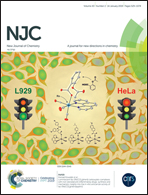Application of hollow-fiber liquid microextraction coupled with a surfactant ion pair solvent for the study of acrylamide and glycidamide in high temperature processed medicinal plant materials
Abstract
A fresh hollow-fiber liquid microextraction coupled with surfactant ion pair solvent approach for the separation and extraction of acrylamide (AA) and glycidamide (GA) in high temperature processed medicinal plant materials (HTPMPMs) is described. The extraction and separation were achieved based on an ion-pair formation approach between the ionizable analyte and cationic cetyl-trimethyl ammonium bromide (CTAB) as an ion-pair agent. Meanwhile, CTAB is present in the organic phase and used as an acceptor phase in hollow fiber-liquid phase microextraction. Extraction parameters affecting extraction efficiency including the ion-pair agent concentration, organic solvent type, sample solution pH, salt content, hollow-fiber length, stirring speed, time and extraction temperature were assessed and optimized. Under the optimized conditions, the preconcentration factors for GA and AA were ≥568 and the calibration curve for GA and AA was linear in the 0.1–10 ng mL−1 range with correlation coefficients ≥0.9996. The intra-day precision and inter-day precision were ≤6.3% and the LODs were 0.0357 ng mL−1 for AA and 0.0305 ng mL−1 for GA (S/N = 3). The approach was utilized in the analysis of HTPMPM samples with satisfactory outcomes.



 Please wait while we load your content...
Please wait while we load your content...